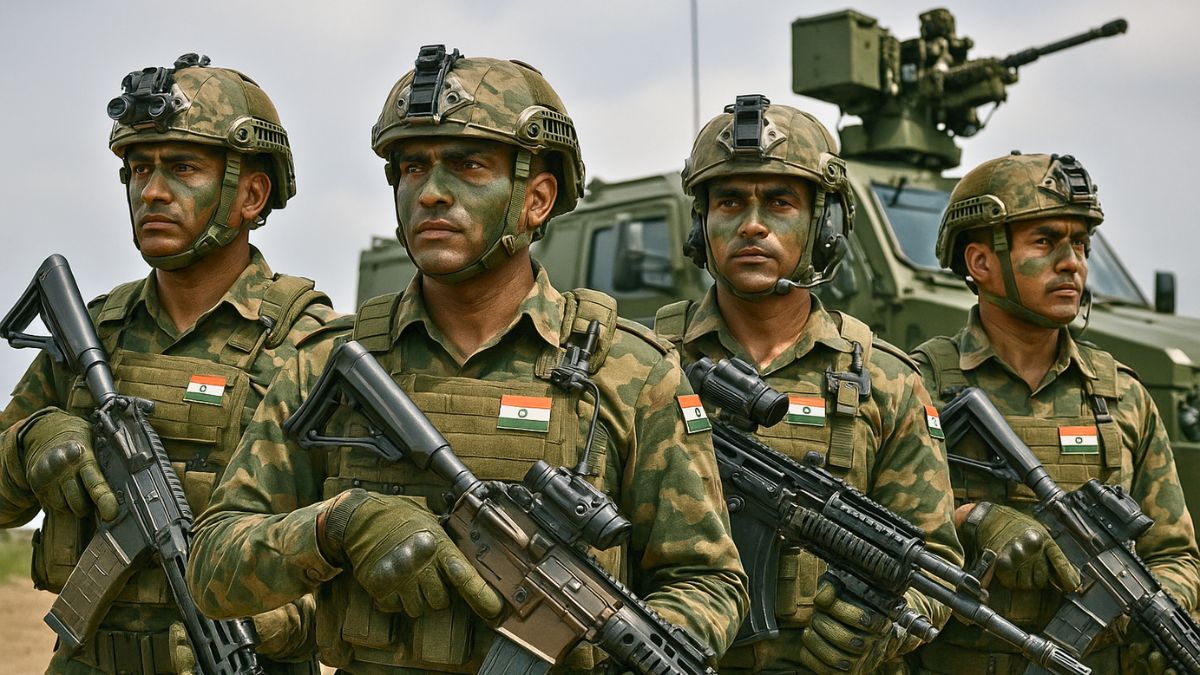In a major stride toward strengthening India’s military readiness, the Defence Acquisition Council (DAC) chaired by Defence Minister Rajnath Singh on Thursday (October 23, 2025), cleared a series of high-value procurement proposals worth approximately Rs 79,000 crore. These approvals span across the Indian Army, Navy, and Air Force.
Aimed at boosting operational capabilities, enhancing surveillance, and reinforcing joint force readiness, DAC’s nod to major proposals is set to immensely benefit the three armed forces. Under this plan, the Indian Army will get the Nag Mk-II Missiles, ELINT Systems and High Mobility Vehicles.
How will these new systems boost Army capabilities?
For the Indian Army, the DAC accorded Acceptance of Necessity (AoN) for the procurement of Nag Missile System (Tracked) Mk-II (NAMIS); Ground-Based Mobile ELINT System (GBMES); High Mobility Vehicles (HMVs) with Material Handling Cranes.
The NAMIS (Tracked) system will empower Army formations with the ability to neutralise enemy combat vehicles, bunkers, and field fortifications with greater precision and speed.
The GBMES, meanwhile, will provide 24×7 electronic intelligence by tracking enemy radar and communication emitters, bolstering India’s battlefield awareness and countermeasures.
The addition of HMVs will enhance the Army’s logistical mobility and heavy-lift capacity, especially in diverse and difficult terrains, ensuring sustained operational support.
Navy to bolster amphibious and anti-submarine capabilities
The Indian Navy received AoN for a range of advanced systems, including Landing Platform Docks (LPDs); 30mm Naval Surface Guns (NSGs); Advanced Light Weight Torpedoes (ALWTs); Electro-Optical Infra-Red Search and Track Systems (EO-IRST); Smart Ammunition for 76mm Super Rapid Gun Mounts.
The LPDs will give the Navy enhanced amphibious operation capability, supporting joint missions with the Army and Air Force, and enabling peacekeeping, humanitarian assistance, and disaster relief (HADR) operations.
The indigenously developed ALWT, designed by the Naval Science & Technological Laboratory (NSTL) under DRDO, can engage conventional, nuclear, and midget submarines, strengthening India’s anti-submarine warfare (ASW) edge.
The 30mm NSG will improve the Navy’s and Coast Guard’s ability to conduct low-intensity maritime operations, including anti-piracy patrols and coastal security missions.
IAF to acquire advanced long-range strike system
For the Indian Air Force (IAF), the DAC approved the Collaborative Long Range Target Saturation/Destruction System (CLRTS/DS) along with other classified proposals.
The CLRTS/DS is designed for autonomous operations, capable of take-off, navigation, target detection, and precision payload delivery deep inside contested airspace. This system represents a significant step toward next-generation, networked warfare capabilities.
This Rs 79,000 crore procurement approval aligns with India’s vision of self-reliance in defence (Atmanirbhar Bharat), with several systems being indigenously designed and developed. The DAC’s decision reflects the government’s strategic focus on modernising the Armed Forces, strengthening joint operational synergy, and adapting to future warfare domains.
